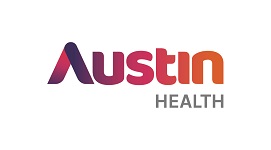Please use this identifier to cite or link to this item:
https://ahro.austin.org.au/austinjspui/handle/1/25553Full metadata record
| DC Field | Value | Language |
|---|---|---|
| dc.contributor.author | Tse, Tamara | - |
| dc.contributor.author | Lentin, Primrose | - |
| dc.contributor.author | Douglas, Jacinta | - |
| dc.contributor.author | Carey, Leeanne M | - |
| dc.date | 2020-12-22 | - |
| dc.date.accessioned | 2021-01-04T23:56:35Z | - |
| dc.date.available | 2021-01-04T23:56:35Z | - |
| dc.date.issued | 2020-12-22 | - |
| dc.identifier.citation | Disability and Rehabilitation 2022; 44(12): 2868-2878 | en |
| dc.identifier.uri | https://ahro.austin.org.au/austinjspui/handle/1/25553 | - |
| dc.description.abstract | To investigate stroke survivors' activity participation 3-months after stroke, reasons for activity participation and the change in reason for activity participation. Thirty stroke survivors were administered the Activity Card Sort-Australia concurrent with a semi-structured interview about their activity participation. Data were analyzed using descriptive statistics and spiral content analysis. Participants had returned, in part, to 96% of their previous leisure, social/educational and household activities 3-months after-stroke; retaining more sedentary and home-based activities but fewer physically demanding and community-based activities. Thirteen participants described a change in their reasons for their activity participation. Personal, environmental and temporal dimensions explained these reasons for activity participation, as well as the changes in reason for activity participation. Full activity participation involved participants' orchestrating a dynamic mix of fulfilling their personal desires according to their current physical, mental and emotional capacity; their social, organizational and physical environmental demands and obligations; and their routines, available time and future plans. Qualitative interviews extend our understanding of the process of returning to participation in life activities and occupations following stroke to reveal that it involves the stroke survivor in a dynamic adaptation process of synchronizing personal, environmental and temporal dimensions in their daily lives. IMPLICATIONS FOR REHABILITATION Rehabilitation professionals need to recognize the unique knowledge and ability stroke survivors have to manage their capacities, activities, occupations and environments. Client-centered practice involving true collaborative partnerships are needed to ensure stroke survivors return more satisfactorily to their activities and occupations. Rehabilitation professionals need to continually consider the ongoing changing relationships that occur between the person, their capacities, social, organizational and physical environments, and the person's activity/occupational participation during recovery from stroke. Returning to full activity/occupational participation after stroke is a dynamic and continuous process. Rehabilitation needs to be provided in different forms at different stages beyond the immediate post-stroke time so that stroke survivors benefit from the "right rehabilitation" at the "right time" throughout their recovery journey. | en |
| dc.language.iso | eng | - |
| dc.subject | Stroke | en |
| dc.subject | adaptation | en |
| dc.subject | human activities | en |
| dc.subject | occupation | en |
| dc.subject | rehabilitation | en |
| dc.subject | social participation | en |
| dc.title | Understanding activity participation 3-months after stroke: a mixed methodology study. | en |
| dc.type | Journal Article | en |
| dc.identifier.journaltitle | Disability and Rehabilitation | en |
| dc.identifier.affiliation | Occupational Therapy Department, St Vincent's Hospital Melbourne, Fitzroy, Australia | en |
| dc.identifier.affiliation | Department of Occupational Therapy, Faculty of Medicine, Nursing and Health Sciences, Monash University, Frankston, Australia | en |
| dc.identifier.affiliation | Living with Disability Research Centre, School of Allied Health, Human Services and Sport, La Trobe University, Melbourne, Australia | en |
| dc.identifier.affiliation | Summer Foundation, Blackburn, Australia | en |
| dc.identifier.affiliation | Occupational Therapy, School of Allied Health, Human Services and Sport, La Trobe University, Melbourne, Australia | en |
| dc.identifier.affiliation | The Florey Institute of Neuroscience and Mental Health | en |
| dc.identifier.doi | 10.1080/09638288.2020.1849429 | en |
| dc.type.content | Text | en |
| dc.identifier.orcid | 0000-0002-7136-5037 | en |
| dc.identifier.orcid | 0000-0003-0940-6624 | en |
| dc.identifier.orcid | 0000-0001-6376-8613 | en |
| dc.identifier.pubmedid | 33353413 | - |
| local.name.researcher | Carey, Leeanne M | |
| item.languageiso639-1 | en | - |
| item.fulltext | No Fulltext | - |
| item.cerifentitytype | Publications | - |
| item.openairecristype | http://purl.org/coar/resource_type/c_18cf | - |
| item.openairetype | Journal Article | - |
| item.grantfulltext | none | - |
| crisitem.author.dept | The Florey Institute of Neuroscience and Mental Health | - |
| crisitem.author.dept | The Florey Institute of Neuroscience and Mental Health | - |
| Appears in Collections: | Journal articles | |
Items in AHRO are protected by copyright, with all rights reserved, unless otherwise indicated.
